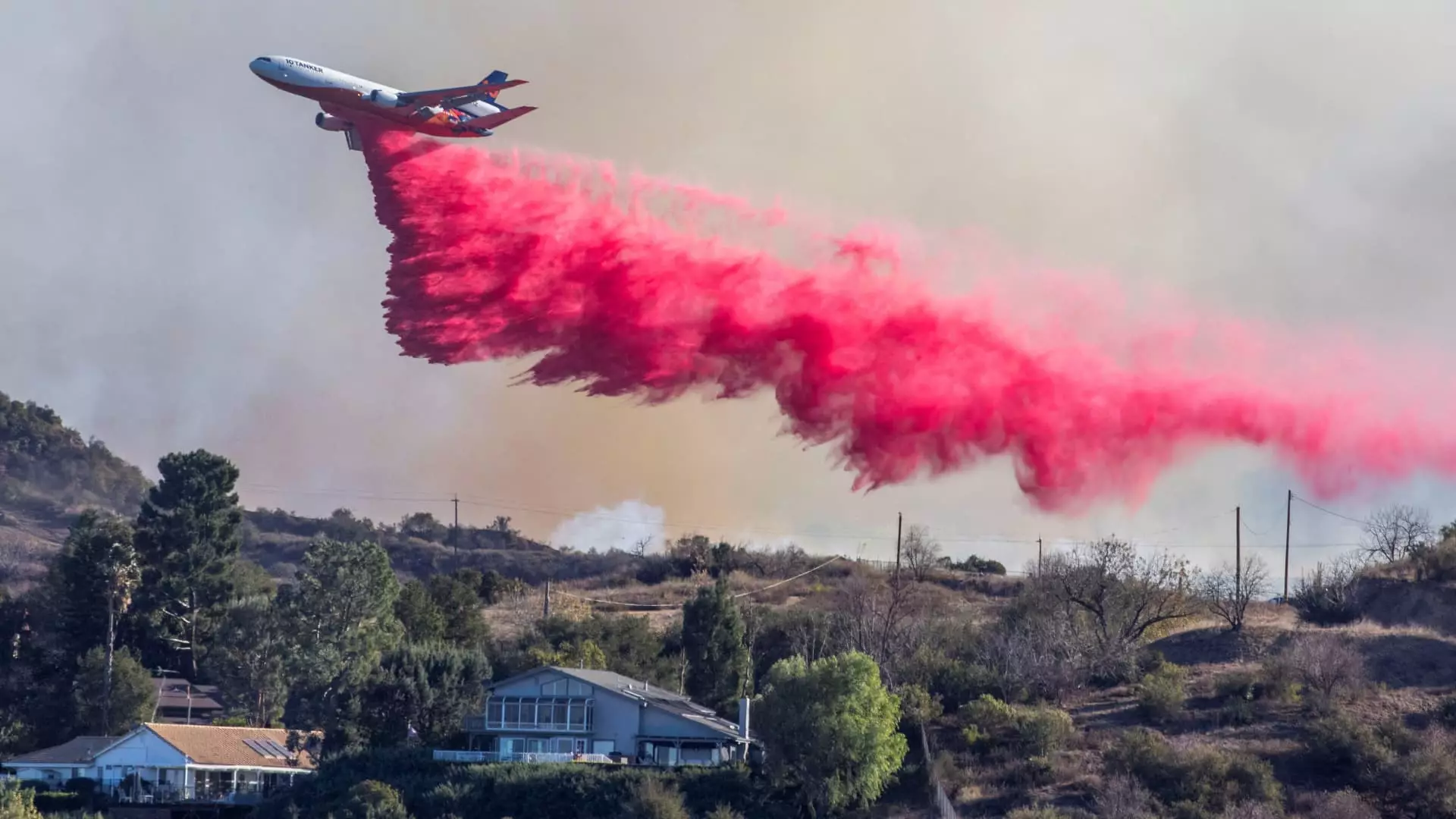In early January, the city of Los Angeles, typically quieter during the off-season for wildfires, found itself grappling with devastating blazes that threatened the homes and lives of thousands of residents. The Palisades and Eaton fires, fueled by unrelenting hurricane-force winds, rapidly consumed vast stretches of land and left destruction in their wake. Over 37,000 acres were scorched, and the flames claimed a staggering number of structures, including over 16,000 homes. This crisis exposed the dire shortcomings in aerial firefighting resources, as demand for these specialized services surged at an alarming rate.
Aerial firefighting is a critical component in combating wildfires, utilizing specialized aircraft to drop fire-retardant chemicals and assist ground crews in suppressing flames. Agencies like Cal Fire operate a robust fleet of fixed-wing and rotor-wing aircraft—the most extensive civil firefighting fleet in the world. However, private companies provide additional aerial support, often partnering with government agencies to meet growing firefighting demands.
Joel Kerley, CEO of 10 Tanker Air Carrier—a prominent player in aerial firefighting—stated that the current situation is akin to “the Super Bowl” for fire response. His company operates a fleet of converted DC-10 planes, known for their capacity to drop large quantities of fire retardant precisely where needed. While contracted during the official wildfire season, many aerial firefighting companies, including Kerley’s, face an uphill battle to maintain availability and operational readiness outside of peak months, especially when fires erupt unexpectedly.
The rapid increase in wildfires across the United States, predicted to become more common and severe due to climate change, has created a growing demand for aerial firefighting resources. Recent reports from the United Nations Environment Program and the Environmental Protection Agency indicate a troubling upward trend in wildfire destruction, prompting industry leaders to sound the alarm over insufficient resources to combat these catastrophic events.
Kerley lamented the state of aerial support, saying, “There’s not enough air tankers to go around.” This sentiment echoes across the industry as firefighting companies struggle to expand their fleets to meet the ever-growing demand. While some countries, such as Australia, have begun developing their own fleets for aerial firefighting, companies like 10 Tanker are driven to enhance their capabilities to ensure timely and effective responses to crises.
Aerial firefighting is not simply about deploying aircraft; it’s about readiness and skill. In the face of the recent Los Angeles wildfires, many aircraft were caught in the off-season routine maintenance, significantly hindering immediate response capabilities. Sam Davis, CEO of Bridger Aerospace, remarked that his company’s water-scooping planes were also in rigorous winter maintenance, emphasizing the logistical challenges in rapidly mobilizing resources when urgency strikes.
Aircraft conversion for firefighting is a complex process that can take substantial time and resources. As Kevin McCullough from Aero Air noted, converting a jet for aerial firefighting is not a quick task—often requiring over a year to make necessary modifications. Therefore, the need for reinforced fleets and prompt upgrades is immediate, yet challenging to fulfill in a timely manner.
The aerial firefighting industry is undergoing transformations, as companies look to innovate and modernize their fleets. De Havilland Aircraft, for example, is working on new generations of water scooping planes expected to hit the market increasingly in demand due to their enhanced features, including better control systems, cockpit air conditioning, and improved durability.
The challenge, however, remains significant. The climate crisis and changing weather patterns make wildfires more unpredictable and destructive. Firefighting agencies and companies must work collaboratively to ensure that aerial resources are not only available but also prepared for rapid deployment. As the frequency and intensity of wildfires rise, the aviation firefighting sector finds itself at a pivotal point in its evolution—one that is essential to protecting communities threatened by fire.
As wildfires continue to wreak havoc in regions like Los Angeles, the pressing need for efficient aerial firefighting resources is clearer than ever. With a combination of aging fleets, unpredictable fire seasons, and limited availability, this sector’s future hinges on proactive investments and innovative approaches to address the growing challenges posed by natural disasters. Stakeholders, including government agencies and private companies, must collaborate and strategize to strengthen their capabilities, ensuring that they are always equipped to combat wildfires, no matter the season.

